An old favorite, two though-provoking nonfiction books, a parable, and a thriller all made their way into today’s Quick Lit round-up. Let’s dive right in!
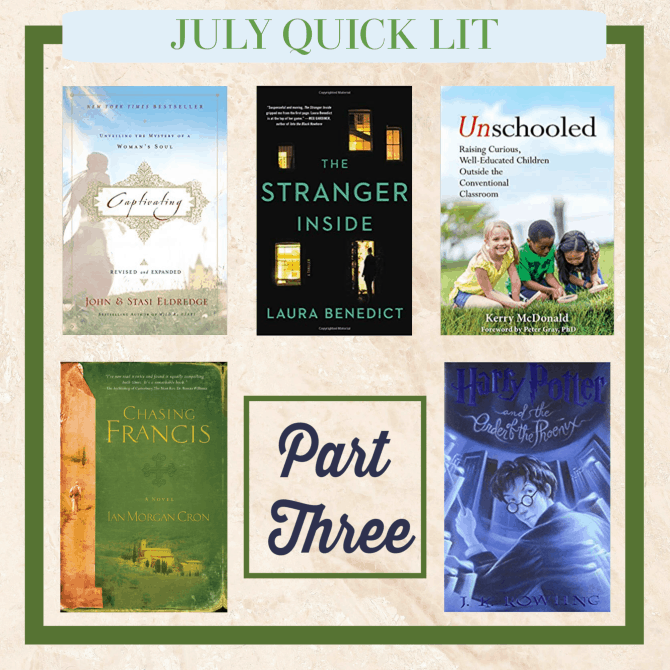
The Stranger Inside, by Laura Benedict: Kimber Hannon receives the shock of her life when she comes home from a weekend away to discover that the locks have been changed on her house and it has been inhabited by a stranger. The intruder tells the police that he obtained the house legitimately, but Kimber knows the truth. This man has something to hide—and he has information on Kimber that SHE is desperate to hide as well.
Unable to reclaim her home, Kimber moves in with her best friend’s family while she and her lawyer ex-boyfriend attempt to resolve the issue. Meanwhile, every aspect of Kimber’s life seems to be falling apart as she comes under suspicion for fraudulent activity at work, her former lover is attempting to lure her back into an illicit affair, and secrets from her distant past begin to resurface.
I found the premise of this book both terrifying and fascinating. What WOULD it be like to be forcibly and unrightfully evicted from my own home? How would I respond? Unfortunately, the premise is one of the few things that work in this novel. There is a lot going one—both past and present—and the multiple plot threads don’t play very well together. Kimber is a deeply dislikable protagonist, and not a very intelligent one, leaving me equal parts frustrated and angry with her and her decisions. Many of the plot twists are incredibly obvious, and the ending was too far fetched to feel satisfying. I appreciated the fast pace (it’s a definite page-turner) but would have liked some more character development and well-developed backstory.
This isn’t the worst domestic thriller I’ve read, but with so many other excellent choices within this genre, it isn’t one I would necessarily recommend.
My Rating: 3.5 Stars.
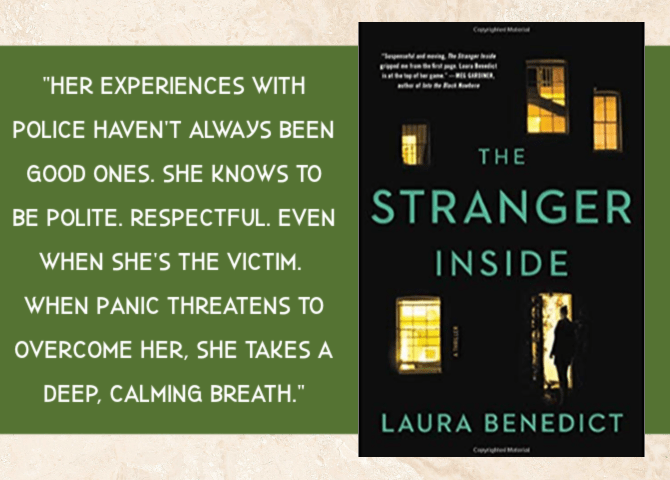
Chasing Francis: A Pilgrim’s Tale, by Ian Morgan Cron: I’m familiar with Ian Morgan Cron through his work on the Enneagram (I love both his book and his podcast) and was interested to read this novel, which is now more than a decade old. The story follows the faith journey of Chase Falson, a former megachurch pastor who has lost his faith in evangelical Christianity and possibly even in God. When his church elders ask him to step away from the pulpit, Chase accepts an invitation from his uncle, a Franciscan priest, to visit him in Italy.
During his time overseas, Chase is introduced to the revolutionary teachings of Saint Francis of Assisi. Chase is surprised by the many parallels between Francis’s experiences and frustrations with the church in the thirteenth century and the issues plaguing the American church today. While grappling with frustrations over the church’s consumerism, hypocrisy, and empty teaching, Chase finds answers through Saint Francis’s own spiritual path.
Like Chase Falson, I also struggle with many aspects of the modern church and am drawn to much of what appeals to Chase about Francis’s work and spirituality including an emphasis on serving the sick and poor, getting to know God outside of intellectual theology, the importance of authentic community and communal worship, a setting aside of spiritual and political bipartisanship, and the value of liturgical and spiritual-formation practices. While I personally believe there is a place for a variety of worship styles and faith applications, I appreciated the points that Cron makes through the descriptions of Falson’s spiritual deconstruction. I especially resonated with Chase’s discoveries about the power of art— how it reflects the beauty and creativity of God, but has largely been neglected in modern evangelical worship settings.
The book’s Italian setting was a definite draw for me, as was the information about Saint Francis: I’d known little about him prior to reading this, and the factual information fits in well with the novel’s narrative arc—enough details to satisfy my interest, without turning the book into an Encyclopedia article. I also enjoyed spotting aspects of Cron’s personality and personal theology throughout the novel; having spent so much time with him through his podcast, it was fun to see how these characteristics of the author made their way into his creative writing.
Chasing Francis won’t appeal to everyone: I can see many Christians (especially Evangelicals) struggling with some of the content. There are also some more fantastical/mystical elements that not all readers will appreciate. But I found it to be an engaging and hopeful novel that succeeds at weaving theological questions into a heartfelt, relatable story.
My Rating: 4 Stars.
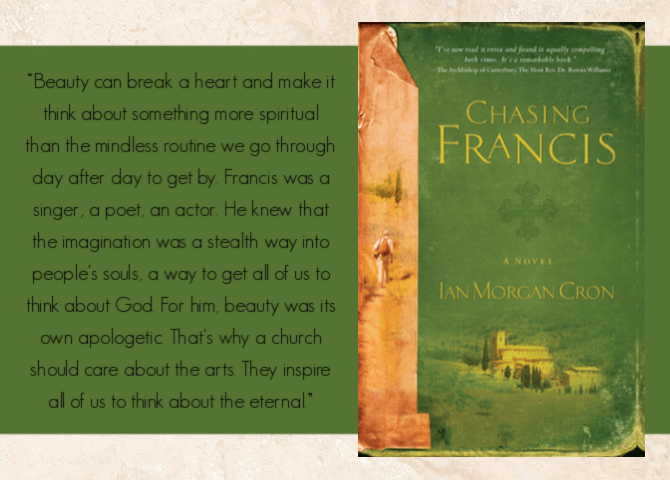
Captivating: Unveiling the Mystery of a Woman’s Soul, by John and Stasi Elderidge: I had decidedly mixed feelings about John Eldredge’s Wild at Heart when I read it last year, but Luke recently read it with his men’s group from church and loved it. He suggested I read this book (the women’s version) to see if it sat better with me, and as it had already been on my TBR for a while, I decided to give it a try.
The premise of Captivating is that the heart is the prize of God’s Kingdom and matters more than anything else in creation; the desires and longings we experience as young girls—to be romanced, to be considered beautiful, to be a vital part of an incredible adventure—were placed there by God and are His way of pointing us to the life He wants us to live. John Elderedge and his wife Stasi argue that many of the lies women struggle with (that we are not beautiful, that we do not have value or purpose, that we need to be in control) can be traced back to the fall of man in the Garden of Eden, but that God wants to heal these wounds, wooing us to Him, deeming us valuable and beautiful, and giving us a purpose to pursue. The authors make a case for the inherent beauty of every woman and describe how the feminine heart can be restored.
As with Wild at Heart, I am not quite sure where I land in my opinion of this book. I appreciated the celebration of femininity and the unique gifts we women have to offer—something that has been lost in our culture’s androgenization movement (i.e., the feminist pendulum having swung too far). I do believe that most women long for romance and beauty, and I appreciated the authors’ validation of these desires rather than blatantly dismissing them or considering them unspiritual or worldly. I also loved the empowering chapters pointing to great women in the Bible and in the present day who have embraced their God-given talents and used them for divine purposes. The chapters about God’s deep desire for relationship with His daughters were also quite moving.
Unfortunately, the book has many sticking points. I struggled with their continual emphasis on the physical beauty of a woman, the romanticizing (no pun intended) of romantic relationships (especially the implications that a woman needs a man in her life to feel complete), and the implication that it is only women whom God wants to romance. I also didn’t care for the saccharine tone, the countless pop culture references (I really could have done without the constant Romantic Comedy illustrations), or the cherrypicking of Bible stories and verses to make their point.
If you do choose to read this book, I would recommend print over audio: the audiobook is read by both authors, who alternate reading every couple of paragraphs, and I found this narration incredibly distracting.
Captivating does make a good companion to Wild at Heart, and I’m glad that I finally got a chance to read it, but it definitely isn’t my favorite book about Christian femininity.
My Rating: 3.5 Stars.
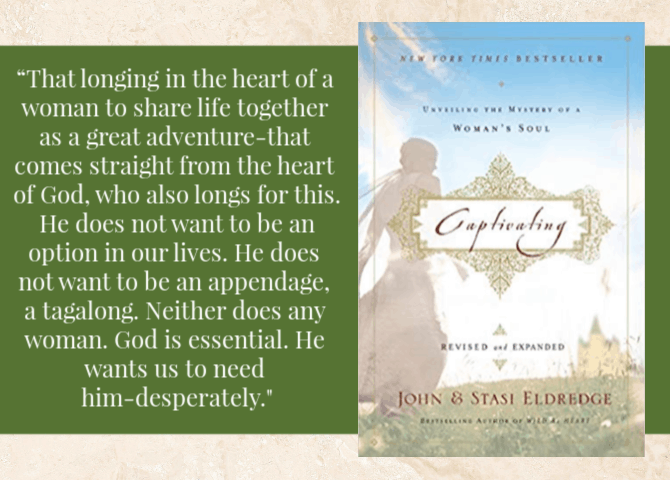
Unschooled: Raising Curious, Well-Educated Children Outside the Conventional Classroom, by Kerry McDonald: Despite my background in education—or perhaps because of it—I hold a skeptical view of conventional schooling. It’s not that I think traditional schools are terrible or that they are destroying our children, but I definitely have some concerns about traditional classrooms, curriculum, and the standard (and standardized) approach to learning. Because of these views, we hope to take an alternative approach to our children’s education. We are still unsure what this will look like, and we are reserving the right to change our minds, but for now the plan is to homeschool our children with a possibility of charter schools or other part-time schooling programs in the future. To that end, I’ve begun doing some research on various schooling models, and this books caught my attention.
Though the term “unschooling” implies a complete disregard for learning (and may evoke images of feral, illiterate children being raised by negligent parents), unschooling is not antithetical to education. Proponents of the unschooling movement believe that children do not need to be taught in order to learn and that the best education is entirely child-driven. In this book, unschooling parent Kerry McDonald introduces the historical and contemporary research on self-directed education, outlines her concerns with traditional schooling models, dispels some of the myths around the unschooling movement, and offers parents guidance in unschooling their own children. She also shares stories from parents (MANY of whom are former public school educators) and children who have reaped the benefits of unschooling, and she introduces readers to several self-directed learning centers that provide children with safe, unstructured environments in which to learn on their own.
McDonald shares many of my own concerns with the traditional schooling models, specifically the artificially imposed age limits for specific milestones, the overemphasis on standardized curriculum, and the ways that classrooms strip children of their instinctive curiosity and creativity. I share the author’s belief that much classroom time is wasted on superfluous skills and subjects that students will likely forget in a year or two (how much of your high school math and science skills do you remember, let alone use on a daily basis?). I also agree that the best learning is self-motivated and that most children will eventually learn the essential skills, albeit on their own timelines and in their own ways.
That said, I personally would not feel comfortable embracing the unschooling method with my own kids. I believe that most children thrive with some structure and guidance; these are essential for me, and I know I will feel more comfortable combining a traditional curriculum with elements of the self-guided approach when we begin homeschooling.
My other qualm with this book is that it seems to be presenting unschooling as the ONLY acceptable method of education, and I do not believe that any model will work well for every child. (Although I did appreciate the author’s suggestions for implementing unschooling concepts within other models, such as simply taking schooling less seriously and petitioning for more free play and less homework in schools). Some children may thrive in an unschooling environment, but despite the author’s claims to the contrary, not every child will have the intrinsic motivation to learn on their own. Unschooling also requires a great deal of time, patience, and awareness on behalf of parents who notice, support, and capitalize on their children’s interests; this is simply not possible for every family.
This book helped me to view unschooling as a legitimate alternative to traditional education (something I’ve been skeptical of in the past), but as with many books centered around more radical ideas, I’m choosing to cherrypick the advice that pertains to me and aligns with my personal schooling philosophies, and let go of the rest. If you are concerned about the current state of today’s education system, or are interested in what other options might exist, I would encourage you to give this a read.
My Rating: 4 Stars.
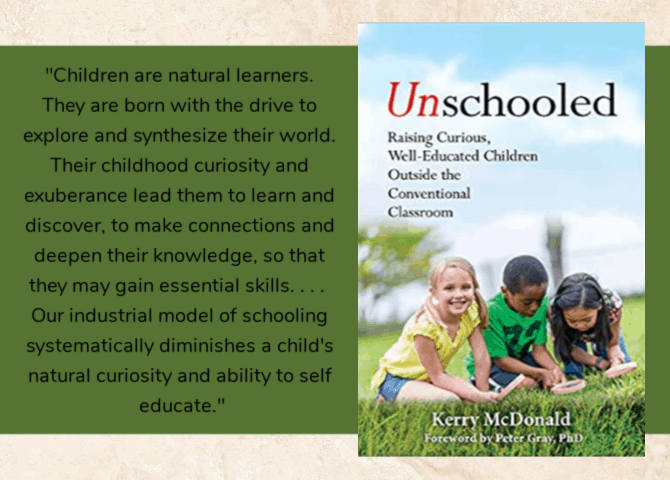
Harry Potter and the Order of the Phoenix, by J. K. Rowling: I’ve continued to enjoy rereading the Harry Potter books (probably my favorite series ever) at the rate of a chapter per week along with the Harry Potter and the Sacred Text podcast.
Order of the Phoenix follows Harry through his fifth year at Hogwarts, which happens to be his worst year yet. Not only is Harry struggling with adolescent emotions (likely compounded by PTSD following the catastrophic events of last year’s Triwizard Tournament), but he experiences strained relationships with Dumbledore and Hagrid (the two adults who have always made him feel most comfortable at Hogwarts) and faces the wrath of Dolores Umbridge, the hateful senior undersecretary to the Minister of Magic whose job description now involves tormenting the Hogwarts students. Harry has also been stripped of Quidditch privileges and, perhaps worst of all, is expected to attend weekly private lessons with his nemesis Snape to learn a new form of magic he doesn’t quite understand. Frustrated by the changes in the school, and eager to assist the underground movement forming to defeat Voldemort, Harry and his friends form a secret defense-focused society of their own.
More than the previous novels, Order of the Phoenix is a coming of age story. Harry’s adolescent experience is painful and difficult to read about, and the lack of lighthearted moments in this book—combined with a relatively slower plot trajectory—makes this my least favorite of the HP books. That said, it’s an important addition to the series and happens to feature two of my favorite scenes from the series (the Weasley Twins’ grand exit and a tender conversation between Harry and Dumbledore near the end of the book). I also enjoyed seeing the development of Neville and Ginny, two of my favorite side characters. I’m definitely looking forward to the faster-paced Half-Blood Prince after this!
My Rating: 4.5 Stars.
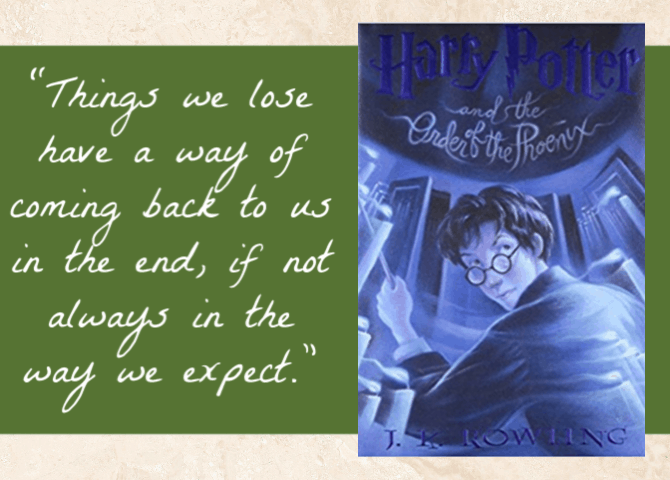
What have you been reading this month? Any books to recommend?